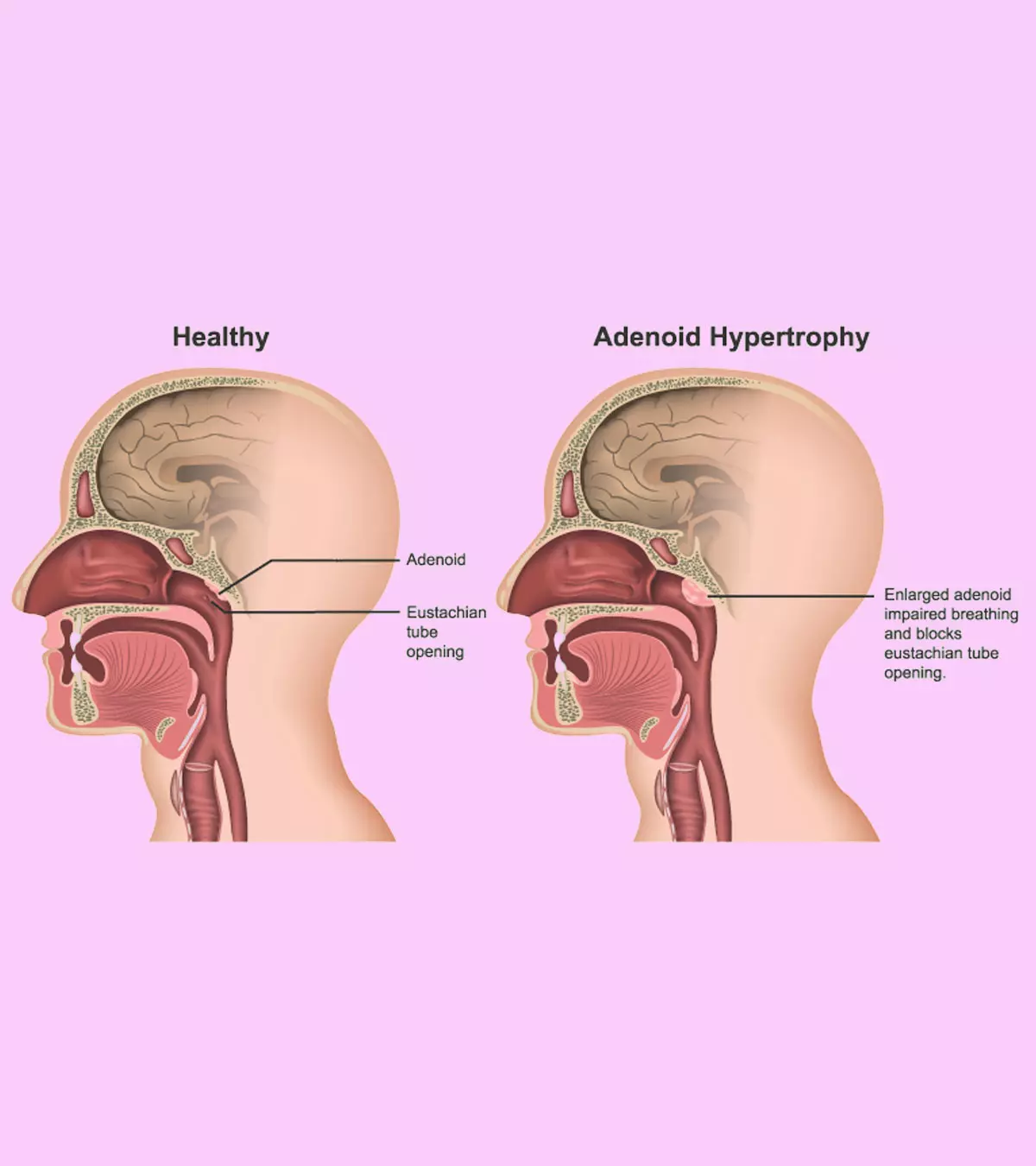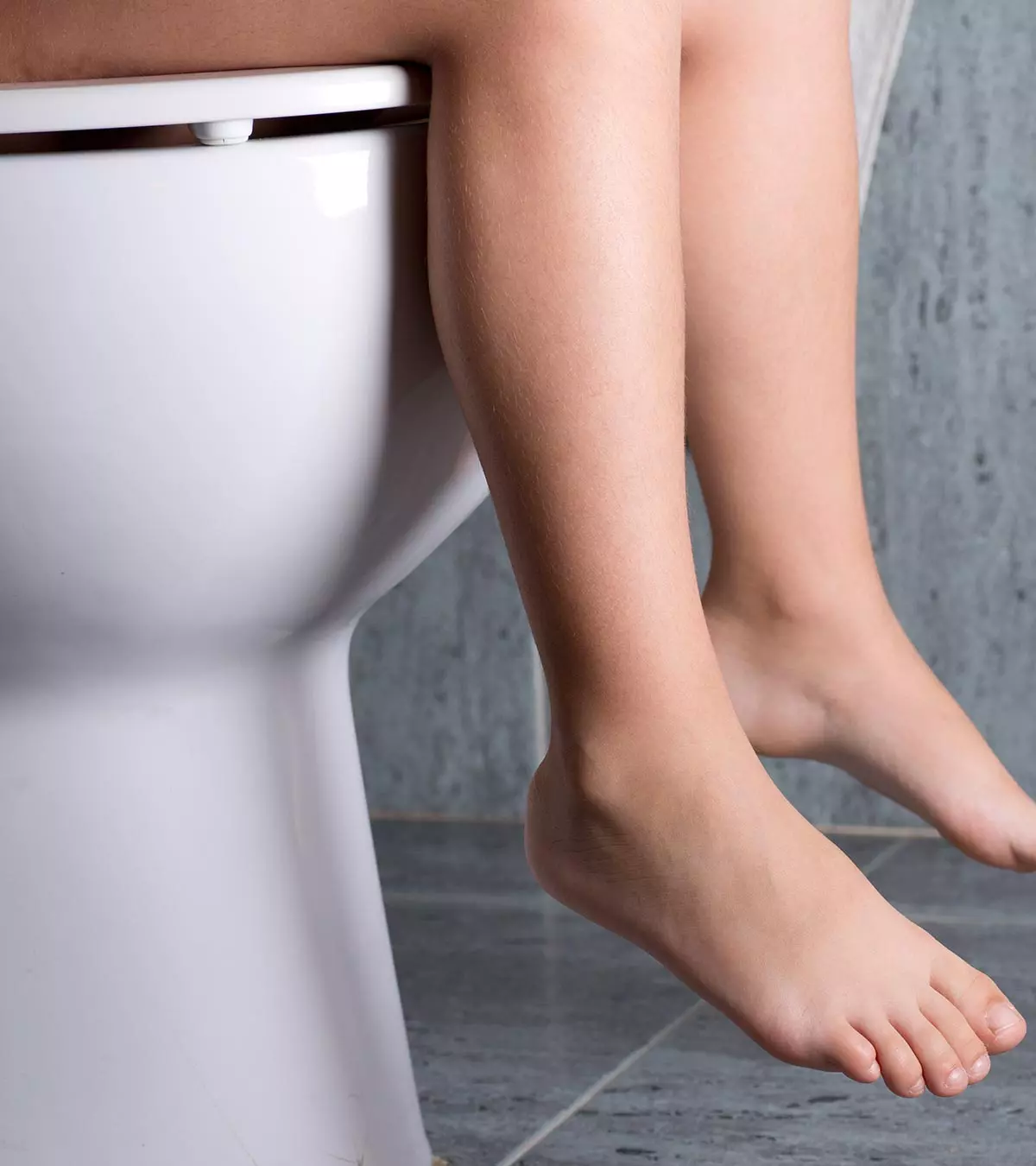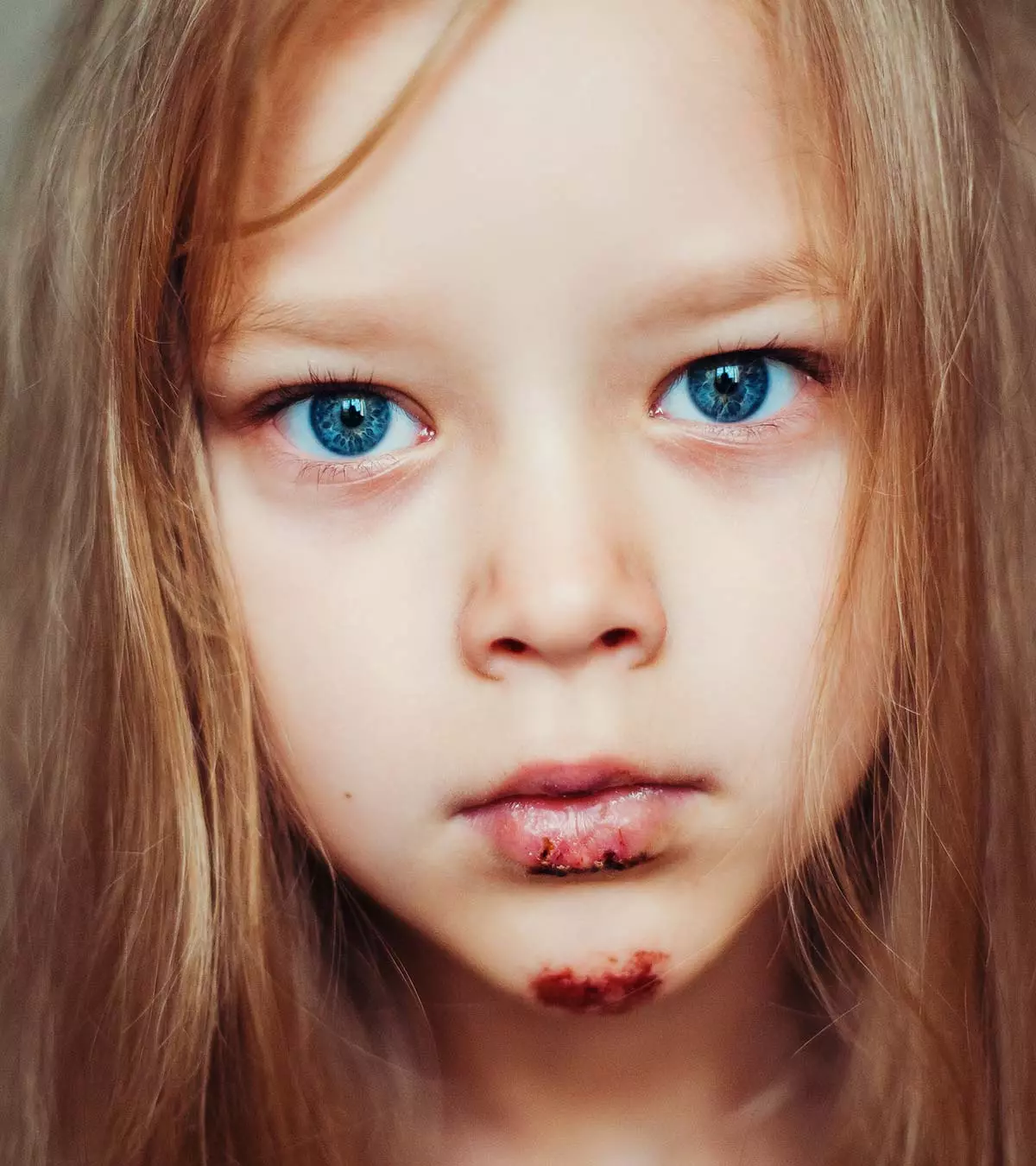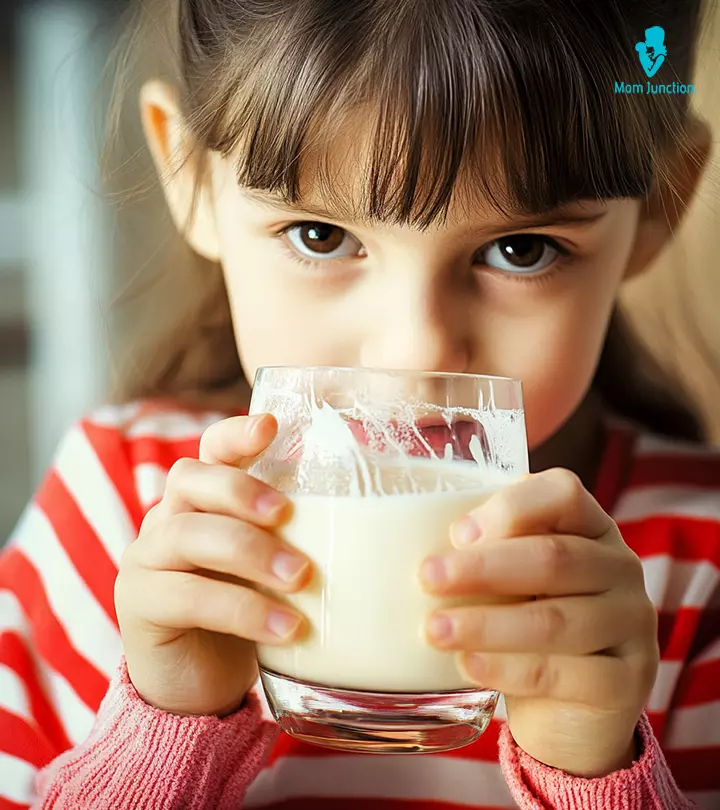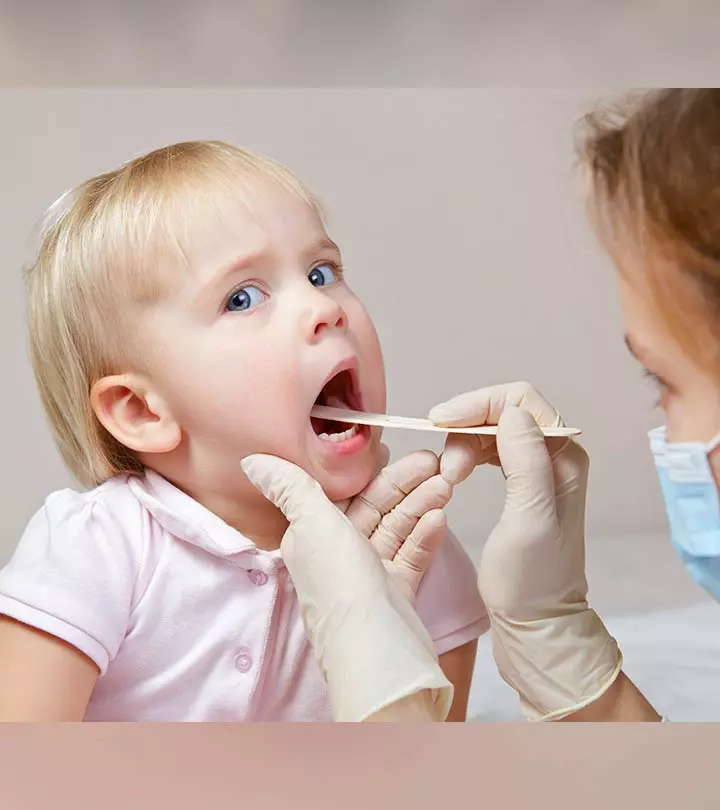
Image: Shutterstock
Childhood disorders, also known as childhood mental disorders or developmental disorders, are brain-based or behavioral disorders that affect a child’s quality of life (1). According to the American Psychological Association (APA), the prevalence of these disorders has increased, and 17.6% to 22% of American children exhibit symptoms of one or more disorders (2). It is crucial you recognize the characteristics of childhood disorders for early detection and intervention, as they can significantly impact your child’s well-being.

Brain-based disorders occur due to neurochemical problems or abnormalities in the brain structure. On the other hand, behavioral problems are the signs of neurodevelopmental difficulties that a physically healthy child displays at home, school, or other social settings. Diagnosing and differentiating these disorders at times is difficult as both brain-based and behavioral disorders have somewhat identical signs and symptoms.
From 2015 to 2018, the National Health Interview Survey acquired information on developmental disabilities. The survey revealed striking differences in disability rates between urban and rural regions, as evident from the graph. These discrepancies affect the use of services for developmental disabilities. These findings indicate that tailored interventions are crucial to bridging these gaps.

Testosterone levels throughout men
Source: Erectile dysfunction: Frequently asked questions; NHSKeep reading to know the causes, symptoms, and treatments of some common pediatric disorders.
Key Pointers
- Children may experience certain common childhood disorders due to neurological issues or developmental delays of the nervous system.
- ADHD is characterized by hyperactive and impulsive behavior that can be managed with talk therapies, different physical activities, or medications.
- Conduct disorder may cause children to show a lack of empathy and misbehavior towards others. Behavioral therapy or medications may help manage the condition.
- Depression, OCD, and other childhood disorders and their treatments to learn about.
Types Of Childhood Disorders
1. Attention Deficit Hyperactivity Disorder

Attention Deficit Hyperactivity Disorder (ADHD) is a neurodevelopmental disorder diagnosed in childhood. This may also persist during adulthood. Children with ADHD lack attention, have impulsive behavior, and are overactive (3). As per a study conducted by multiple institutions, it was found that the global prevalence of ADHD in children aged three to 12 years was about 7.6%.
Causes and risk factors of ADHD
The exact causes of ADHD are unknown, but recent advances in scientific research show a strong connection between ADHD and genetic factors.
The possible causes and risk factors of ADHD include (3):
- Brain injury
- Consumption of alcohol or tobacco during pregnancy
- Low birth weight
- Premature delivery
- Family history of ADHD
According to popular belief, overconsumption of sugar by children, watching television for long, type of parenting, and social factors may cause ADHD.
However, there is no research to support it.
Symptoms of ADHD
Children with ADHD may show these symptoms (3):
- Daydreaming
- Hyperactivity
- Inability to control emotions, maintain social relationships, or resist temptations
- Losing track of things
- Being excessively talkative, impatient, and forgetful
- Making careless mistakes
- Fidgeting
Treatment for ADHD
The treatment plan for ADHD differs from one child to another. A doctor will be able to assess the condition and suggest medications and therapy. Behavioral therapy and parent counseling are suggested for children between four and five.
A good treatment plan also requires close monitoring and regular follow-ups. Medications can be changed over time depending on the improvement of condition (3).
Other management strategies that work well for ADHD are:
- Eating a well-balanced diet
- Getting proper sleep
- Engaging in physical activity
- Reducing screen time
- Maintaining a daily routine
 Did you know?
Did you know?2. Autism Spectrum Disorders
Autism spectrum disorder (ASD), also known as autism or Asperger’s syndrome, is a group of developmental disorders that cause social, communicational, and behavioral difficulties. ASD begins during early childhood and continues throughout life. Although children with ASD do not look different, they behave, interact, and learn differently from others (4) (5).
Causes and risk factors of ASD
The exact cause of Autism Spectrum Disorder in children is unknown, but research shows that it is multifactorial.
Some possible causes and risk factors of ASD include (4) (5):
- Genetic conditions
- Family history of ASD
- Children born to parents older than 35 or 40
- Premature birth
- Low birth weight
- Genetic conditions, such as fragile X syndromeiA genetic condition that impacts a person's behavior and learning capacity or tuberous sclerosisiA genetic disorder that typically results in non-cancerous tumor growth in various parts of the body , may increase the risk of ASD.
Symptoms of ASD
Some of the common symptoms are (4) (5):
- Having low or high intelligence and detailed memory
- Being visual (prefer learning by seeing) and auditory (prefer learning by listening) learners
- Excelling in math, science, music, and arts
- Communicating through unusual words, gestures, and expressions
- Responding and behaving differently
- Inability to read and understand others’ feelings
- Inability to communicate and maintain eye contact
- Inability to respond when people talk to them
- Repeating words said to them
- Inability to express their needs
- Losing the skills they once had
Treatment for ASD
Although there is no particular treatment for ASD, early intervention and management help children deal with the condition. Most treatments are based on the symptoms of children. Common treatment strategies are behavior and communication therapy, support groups, and medications (4) (5).
3. Anxiety Disorders
Pediatric anxiety disorders are mental illnesses with a prevalence rate of 10% to 20%. Children who cannot outgrow the fears they develop at a young age are likely to be diagnosed with anxiety disorders. Furthermore, children grow into adults and are at an increased risk of developing depression, attempting suicide, or developing other mental illnesses (2).
Some common types of pediatric anxiety disorders are (6):
- Separation anxiety disorder(fear of being away from parents)
- Phobias (fear of specific things, such as dogs, insects, and doctors)
- Social anxiety disorder (fear of being in a social setting)
- Generalized anxiety disorder (being worried about the future)
- Panic disorder (sudden onset of fear that may increase the heart rate, cause trouble in breathing, and make children feel uncomfortable)
- Selective mutism (A communication disorder where a person is unable to speak in certain social situations, such as with relatives or friends)
Causes of anxiety disorders
Several factors that cause anxiety disorders are (7):
- Family history of anxiety disorder
- Certain neurotransmittersiChemical messengers in the brain that send signals throughout the body to carry out different functions (brain chemicals) in the brain
- Traumatic events, such as serious illnesses or loss of a loved one
- Being in a family where members are anxious and fearful
Symptoms of anxiety disorders
Parents and teachers may detect anxiety disorders by the way children look and behave. Such children often feel anxious, shaky, or jittery during certain situations. Some might also have shortness of breath, a hot face, a pounding heart, and a dry mouth (7).
Treatment for anxiety disorders
Anxiety disorders in childhood are mostly treated with cognitive-behavioral therapy (CBT).
With the help of CBT, therapists help children
- understand how their fear affects their bodies, work, and feelings.
- face their fears, so they eventually overcome them.
CBT also helps parents understand how to deal with their anxious children. (8).
4. Bipolar Disorder

Children with bipolar disorder experience extreme moods; sometimes, they are so excited and energetic that they cannot sleep, while they feel sad and depressed on other occasions.
This mood disorder is characterized by (8):
- Extreme mood patterns
- Mood changes that last for days or weeks
- Disruptive behaviors that cause emotional and physical problems
Causes and risk factors of bipolar disorder
The exact cause of bipolar personality disorder is unknown, but research shows it is the result of biological factors and life experiences. Some of the causes of this psychotic disorder are (8):
- Genetic factors increase the risk of developing bipolar disorder by 50%. However, only 6% of children whose parents have bipolar disorder have been diagnosed with this condition.
- Environmental factors, such as poverty, mental illness in the family, abusive parenting, and violence
- Family history of depression
- Changes in the brain chemistry (neurotransmitters)
Symptoms of bipolar disorder
Children may have bipolar disorder if they have manic, depressive, or mixed symptoms that last for days or weeks (8). It may be difficult to tell its symptoms in children since the symptoms may resemble the child’s usual behavior. Speak to a doctor if you have any concerns.
Symptoms of the manic episode
- Animated behavior
- Talking fast
- Changing topics of conversation frequently
- Immersed in a new, time-consuming project
- Inability to sleep
- Having unrealistic confidence
- Impulsive actions
Symptoms of depressive episode
- Feeling sad and tired
- Inability to enjoy favorite activities
- Inability to remember or concentrate
- Restlessness and irritability
- Decreased appetite or a tendency to overeat
- Thinking or talking of suicide
Symptoms of a mixed episode
- Feeling upset or agitated
- Having sleep issues
- Loss of appetite or a tendency to overeat
- Suicidal thoughts and talks
Treatment for the bipolar disorder
Although there is no cure for bipolar disorder, a healthcare professional may help you design an effective treatment plan for children to help them manage their condition and lead a normal life. The treatment options are (9):
- Administering medications according to their age and severity of the condition.
- Different psychotherapies help children manage their depression, low self-esteem, and communication.
Parents may help their children by
- being patient, understanding, and supportive
- encouraging them
- helping them enjoy their everyday activities
5. Conduct disorder
Children with conduct disorder often have emotional and behavioral problems, including oppositional defiant disorder. For example, they are unkind to others, seek pleasure by hurting others, do not show empathy, and have difficulty following rules. Children are often referred to as bad and misbehaved, but, in reality, conduct disorder is a kind of mental illness.
Causes of conduct disorder
Some causes of conduct disorders are (10):
- Brain damage
- Abuse or neglect
- Genetic factors
- Traumatic events in life
Symptoms of conduct disorder
Some common symptoms of conduct disorders in children are (10):
- Bullying or threatening others
- Being physically unkind to others
- Showing no regret for the misdeed
- Stealing items from others
- Running away from home
- Ignoring the feelings of others
- Hurting animals
Treatment for conduct disorder
Medical treatment may be complex and continues for a long time because changing the thoughts and behaviors of children takes time (10).
- The health specialist takes information from parents, teachers, and other medical specialists to design a proper treatment plan.
- Psychotherapy and behavior therapy are given to children to control their feelings and behavior.
- Special education is provided to younger children who have learning disabilities.
- Medications are used for children with depression, anger issues, and attention difficulties.
6. Learning Disabilities

Learning disability is a neurological condition where children find it difficult to read, write, listen, reason, or understand certain concepts. This does not indicate that they are lazy or unintelligent. It shows that they process information differently. There are many types of learning disorders, such as dyslexiaiA learning difficulty leading to difficulties in reading and writing , dysphasiaiA linguistic dysfunction that impacts communication ability and language comprehension , dyspraxiaiA condition that interferes with mobility and coordination , among others (11).
Causes of learning disabilities
Some causes of learning disabilities in children are (12):
- Heredity
- Illness or head injury after birth
- Alcohol consumption during pregnancy
- Premature birth and low birth weight
- Poor nutrition
- Exposure to toxins found in paint, ceramics, or toys
- Disorders, such as ADHD
Symptoms of learning disabilities
Children with learning disabilities may write reverse letters, words, and numbers and face difficulty in (13)
- differentiating between right and left
- following and remembering instructions
- writing, cutting, or drawing
- understanding the concept of time
- staying organized
Treatment for learning disabilities
Learning disabilities cannot be cured but can be effectively managed with the help of parents, teachers, and healthcare professionals. Some treatment plans recommended are (12):
- Providing extra help by having a tutor teach the child at home.
- Taking the help of a special educator to enhance learning abilities.
- Providing therapies, such as speech therapy or occupational therapy (therapy to improve writing skills).
- Extra therapies may be given through art, dance, or music.
7. Depression
Children might go through emotional ups and downs like adults. However, if the emotions of sadness, hopelessness, and irritability stay longer, it gives rise to depression. This condition, also known as depressive disorder, affects the sleep, normal activities, and appetite of children. Alcohol and drug usage, resulting from severe depression in children can also lead to substance use disorder. In serious cases, it may also lead to suicidal tendencies.
Causes of depression
Some causes of depression in children are (14):
- Family issues
- Family history
- Physical illness
- Difficult life circumstances
- Alcohol and drug usage
Symptoms of depression in children
The symptoms that indicate depression in children are (14):
- Having behavioral disorder
- Changing routines, such as eating and sleeping habits
- Feeling sad and hopeless
- Lack of interest in enjoyable activities
- Fatigue
- Feeling irritable
Treatment for depression
Depression is generally treated by psychotherapy (counseling) and medications (14).
- The most common psychotherapy used is cognitive-behavioral therapyiPsychotherapy that helps one become aware of negative thoughts and be better equipped to cope with challenging issues (CBT). This therapy encourages the child to develop positive thoughts and control negative emotions.
- Health professionals may advise parents to give antidepressants to help children overcome depression.
 Quick fact
Quick fact8. Intellectual Disabilities
Children have intellectual disabilities when they face difficulties in
- communicating, learning and problem-solving (intellectual functioning)
- carrying out everyday activities (adaptive behavior)
These disabilities begin during early childhood (15).
Causes of intellectual disabilities
Intellectual disabilities in children may occur due to the following reasons (15)
- Genetic syndrome (Down syndrome or Fragile X syndrome)
- Serious illnesses, such as measles, whooping cough, and meningitis
- Childhood exposure to toxins
- Brain malformation
- Maternal disease
- Infection during pregnancy
- Problems during birth
Symptoms of intellectual disabilities
Some symptoms of intellectual disabilities in children are (16):
- Learning to sit, crawl, or walk late
- Having trouble speaking
- Difficulty in understanding social rules
- Difficulty in problem-solving and logical thinking
Treatment for intellectual disabilities
Intellectual disabilities persist throughout life, but early interventions may help manage the condition well. Some treatment options are (15):
- Providing special education
- Having a supportive family
- Vocational programs
Parents should be patient with their children and inculcate independence and responsibility in them.
9. Cerebral Palsy

Cerebral palsy (CP) along with developmental coordination disorder (DCD) are disorders of movement. Cerebral palsyiMotor disability caused by defective brain development causing impaired movement, balance, and posture affects children’s motor skills, movement, and muscle tone, making it difficult to coordinate their movements. The condition also affects their talking, eating, breathing, and bladder and bowel control.
Causes of cerebral palsy
Cerebral palsy may happen when the child’s brain is affected while it is still developing before birth. Some causes are (17):
- Infections at the time of pregnancy
- Stroke before or after birth
- Genetic disorders
- A medical issue with the mother during pregnancy
- Untreated jaundice
Brain damage during infancy may also cause cerebral palsy. The reasons for the damage may be:
- Meningitis
- Problems with blood flow in the brain
- Shaken baby syndrome (when infants are shaken)
- Having an accident
- Lead poisoning
Symptoms of cerebral palsy
Children with cerebral palsy may have these symptoms (17):
- Impaired vision or blindness
- Hearing loss
- Tooth decay
- Sucking food or fluid into the lungs (food aspiration)
- Problems with speech and learning abilities
- Problems with sleep
- Weak bones
Treatment for cerebral palsy
The treatments for cerebral palsy include (17):
- Therapies for speech, learning, and hearing
- Medicines for muscle stiffness and pain
- Surgery for children with curved spine or dislocated hips
- Well-balanced diet rich in calcium, vitamin D, and phosphorus
 Did you know?
Did you know?10. Obsessive-Compulsive Disorder
Obsessive-Compulsive Disorder or OCD in children is diagnosed when they are obsessed with a thought, anxiety, or ritual and urge to repeat the behavior.
Causes of OCD
Some of the causes of OCD are (18):
- Lack of a brain chemical (serotoniniA neurotransmitter that helps carry messages between the brain and the body )
- Family history of OCD
- Streptococcal infections
Symptoms of OCD
Some symptoms of OCD in children are (18):
- Being obsessive about dirt and germs
- Being repetitively doubtful
- Repetitively touching and counting things
- Having troubled thoughts about religious beliefs
- Paying excessive attention to details
- Being worried about future
- Having violent and aggressive thoughts
Some children may also develop habits of repeating everyday activities, such as washing hands repetitively, counting and recounting something, and so on.
Treatment for OCD
The treatment for OCD depends on the age of the child and the severity of the problem. Some of the treatments are (18):
- CBT helps children understand the problem and change their behavior.
- Family therapy, where family members support children to get out of this habit.
- Medicines are prescribed to increase serotonin in the brain.
- Antibiotics are suggested to children diagnosed with streptococcal infections.
Frequently Asked Questions
1. Is autism considered a neuropsychiatric disorder?
Yes, autism is considered a neuropsychiatric disorder, which affects a child’s communication, behavioral, and social interaction abilities. In addition, genetic factors may be involved in the pathology (22).
2. Is ADHD a form of autism?
No, ADHD is not a form of autism. Autism spectrum disorder (ASD) includes what was previously called Autistic Disorder, Asperger syndrome, or Pervasive Developmental Disorder. Some of its symptoms may overlap with ADHD, but it is a separate disorder (23) (24).
3. Do autistic children have tantrums?
Children with autism may experience meltdowns, which can often be mistaken as temper tantrums by others. They usually occur when a child becomes overwhelmed by their current situation and temporarily loses control of their behavior. During a meltdown, a child may express their emotions through shouting, screaming, crying, kicking, lashing out, or biting (25).
4. How are childhood disorders diagnosed?
Diagnosing childhood disorders typically involves a comprehensive evaluation by a qualified healthcare professional. They may conduct interviews, behavioral assessments, and standardized tests.
Childhood disorders significantly impact a kid’s development and their overall quality of life. In addition, some of these disorders may not have a definite cause and could be challenging to diagnose. Therefore, you must evaluate your child with a professional if you notice unusual signs or behavioral changes. Furthermore, early diagnosis and suitable treatment under the guidance of a specialist are crucial to managing their condition. Remember to support and motivate your children to overcome these disorders and lead a normal life.
Infographic: Indicators Of Speech Disorders In Children
A speech disorder could make it difficult for the child to communicate, leading to anxiety and frustration. Assessing their condition by a professional will help them get the right treatment. Take a glance at this infographic that provides a list of parameters and indicators you may check to determine speech disorders.
Some thing wrong with infographic shortcode. please verify shortcode syntax
Understanding childhood anxiety can be challenging, but this informative video delves into its causes and effects. Gain practical advice to effectively handle and alleviate anxiety in your child.
References
- Childhood Disorders.
https://www.longdom.org/scholarly/childhood-disorders-journals-articles-ppts-list-2561.html - Forms and Causes of Childhood Disorders.
https://www.mentalhealth.com/library/forms-and-causes-of-childhood-disorders - Attention-Deficit/ Hyperactivity Disorder (ADHD).
https://www.cdc.gov/adhd/about/index.html - Autism Spectrum Disorder | ASD.
https://www.psychiatry.org/patients-families/autism/what-is-autism-spectrum-disorder - Autism Spectrum Disorder.
https://www.cdc.gov/autism/about/index.html - Anxiety and Depression in Children.
https://www.cdc.gov/children-mental-health/about/about-anxiety-and-depression-in-children.html?CDC_AAref_Val=https://www.cdc.gov/childrensmentalhealth/depression.html - Anxiety Disorders.
https://kidshealth.org/en/parents/anxiety-disorders.html - Bipolar Disorder Symptoms & Causes.
https://www.childrenshospital.org/conditions-and-treatments/conditions/b/bipolar-disorder/symptoms-and-causes - Bipolar Disorder in Children.
https://my.clevelandclinic.org/health/diseases/14669-bipolar-disorder-in-children - Conduct Disorder.
https://www.aacap.org/AACAP/Families_and_Youth/Facts_for_Families/FFF-Guide/Conduct-Disorder-033.aspx - Learning Disabilities and Disorders.
https://www.helpguide.org/family/learning-disabilities/learning-disabilities-and-disorders - Learning Disability.
https://www.whiteswanfoundation.org/disorders/neurodevelopmental-disorders/learning-disability - Learning Disorders.
https://www.hopkinsmedicine.org/health/conditions-and-diseases/learning-disorders - Depression in Children.
https://my.clevelandclinic.org/health/diseases/14938-depression-in-children - What is Intellectual Disability?
https://www.psychiatry.org/patients-families/intellectual-disability/what-is-intellectual-disability - What are the signs of intellectual and development disabilities (IDDs)?
https://www.nichd.nih.gov/health/topics/idds/conditioninfo/symptoms - Cerebral Palsy.
https://kidshealth.org/en/parents/cerebral-palsy.html - Obsessive-Compulsive Disorder (OCD) in Children.
https://www.cedars-sinai.org/health-library/diseases-and-conditions—pediatrics/o/obsessive-compulsive-disorder-ocd-in-children.html - Attention Deficit Hyperactivity Disorder (ADHD).
https://www.cdc.gov/nchs/fastats/adhd.htm - Depression in children.
https://my.clevelandclinic.org/health/diseases/14938-depression-in-children - Cerebral Palsy (CP).
https://www.cdc.gov/cerebral-palsy/about/index.html - Genetic Overlap Among Autism Spectrum Disorders and Other Neuropsychiatric Disorders.
https://www.ncbi.nlm.nih.gov/books/NBK573607/# - Camille Hours et al.; (2025); ASD and ADHD Comorbidity: What Are We Talking About?
https://www.frontiersin.org/journals/psychiatry/articles/10.3389/fpsyt.2025.837424/full - ADHD and Autism Spectrum Disorder.
https://chadd.org/about-adhd/adhd-and-autism-spectrum-disorder/ - Meltdowns.
https://www.autism.org.uk/advice-and-guidance/topics/behaviour/meltdowns/all-audiences#
Community Experiences
Join the conversation and become a part of our nurturing community! Share your stories, experiences, and insights to connect with fellow parents.
Read full bio of Dr. Salla Semmane
Read full bio of Pragya Bhargavi
Read full bio of Dr. Ritika Shah
Read full bio of Dr. Joyani Das








